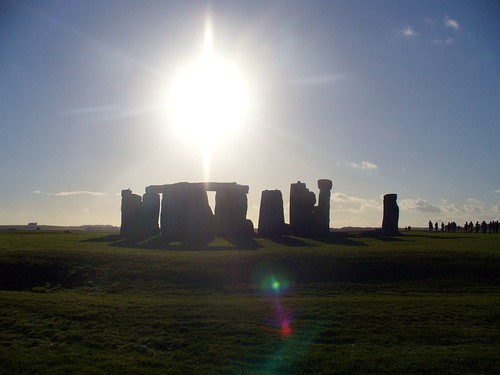As excavation gets on the way at Stonehendge, archaeologists make a startling discovery.
The Bluestone Project was to help archaeologists enhance their knowledge of how these massive stones (82 in number) from south-west Wales travelled the 300 miles and to help date their arrival in Salisbury Plain, Wiltshire.
Archaeologists whilst excavating today found the skeleton of an animal of massive proportions, the site team of specialists have refused to committee themselves as to what this animal might be. But one individual who refused to be named said it resembled a Shantungosaurus.
Shantungosaurus believed to be extinct for over 65 million years, will make archaeologists rethink the date of Stonehenge. With its purpose shrouded in mystery, the modern world has only been able to speculate about why – and when – Stonehenge was created.
For many years it was believed to take wooden walkways and up to 500 men, with another 100 in front laying rollers to moved these stones weighing up to four tonnes each, 300 miles from the hills of Wales. Some believe the stone circle to have healing properties, while others believe it to be a seasonal calendar dating back to 3,100 BC, with sun appearing in the "gateway" on the solstice – Midsummer's Day.
Wales known for its beauty and remoteness could hold the key to this fascinating discovery. Two years ago a farm labourer while digging for shale, hardcore in the Preseli Hills, Pembrokeshire found the jaw bone belonging to a Shantungosaurus.
This recent discovery at Stonehenge opens the debate as to when Shantungosaurus last walked on the British Isles, whether they coexisted and were domesticated by our predecessors with the possibility that Stonehenge was in fact an early coral or cage for these impressive animals.
Bones from the site have been sent to Aberystwyth University for carbon dating, while the results are eagerly awaited by both archaeologists and paleobiologists, officials at English Heritage have cordoned off the site, with extra police drafted in to protect the monument as the worlds media descends on this well known landmark, excavations continue.
Solace Through The Seas
-
Brian O'Mahony Photography has added a photo to the pool:
[image: Solace Through The Seas]
Coastal view of the West Shore Beach from the Great Orme owith...
2 hours ago






where exactly were the bones found in relation to the monument, in the circle outside of it, yards away?
Some of you may have gathered this was my April Fools Joke for 2008, thought I had better put things straight before I'm asked any more questions. ;-)
Perhaps in such cases a license to use the internet may deem reasonable for some who abuse it... yes, this is my civil tone.
This discovery is incredibly exciting as it could change our understanding of Stonehenge.